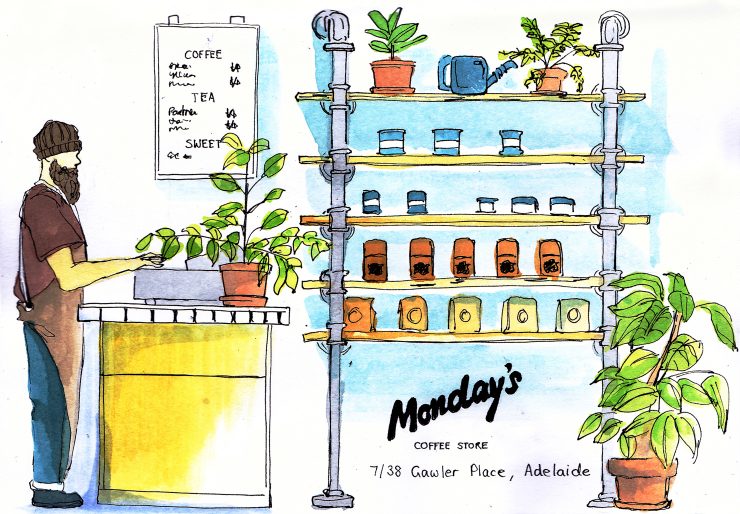
What is it about a city that draws you to it, or makes you remember it fondly? Personally, whenever I think about places like Copenhagen, Los Angeles, Paris, or Melbourne, my feelings of affection for each place stem largely from the businesses and people within them. Sure—climate, architecture, natural resources, and politics all have an impact as well—but my most visceral memories come from the experiences that were had and connections that were made, quite often, over a cup of coffee, a meal, or a glass of wine.
A bit over six months ago, I made the move from Melbourne to Adelaide—a move that when I spoke about it to friends and strangers alike, the responses were largely “why?” or “what for?” Now, don’t get me wrong, Adelaide has a lot going for it—the giant stretch of beach just off the west side of the city, rolling hills of vineyards on all other sides, a rich cultural and artistic scene, and world-class universities in abundance (to name a few)—but some days, when I’m missing Melbourne and the community there, I’ve asked myself the same thing.
Enter Elaine Cheng. One day when I was working a shift at Monday’s Coffee Store, I met Cheng as she popped in to drop off a couple of sketches she’d done of the shop the week before. The pieces themselves were stunning, capturing the essence and feel of the space in a way that photographs couldn’t. From there, I followed her work closely, watching it evolve from quick sketches of new cafes to in-depth pieces documenting long-established businesses, and an eye-opening illustrative piece on the laws standing in the way of Adelaide’s food truck culture.
With all of this in mind, I couldn’t help but take the opportunity to have a chat with Cheng about herself, her work, and why she chooses to spend her time drawing the people and places of Adelaide.
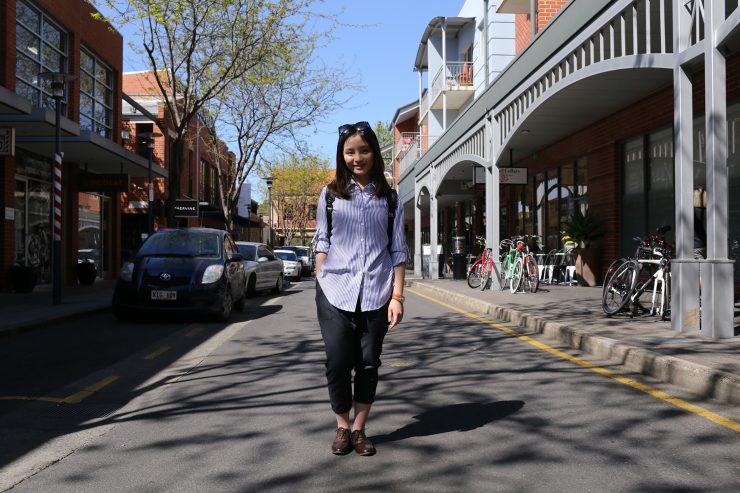
What’s your background?
I’m currently a design student in my last year of university. It was hard to settle on this career at first because I struggled to see its significance and the contributions it could make to our community. After I landed a job at my university (FUSA) as a media officer, however, I was able to understand the sheer impact of good design. It communicates ideas, changes hearts, and makes things precious.
So I set out to practice by drawing everything I saw and everywhere I went. I love the rough, unfinished characteristics of a sketch; it leaves room for wonder and storytelling.
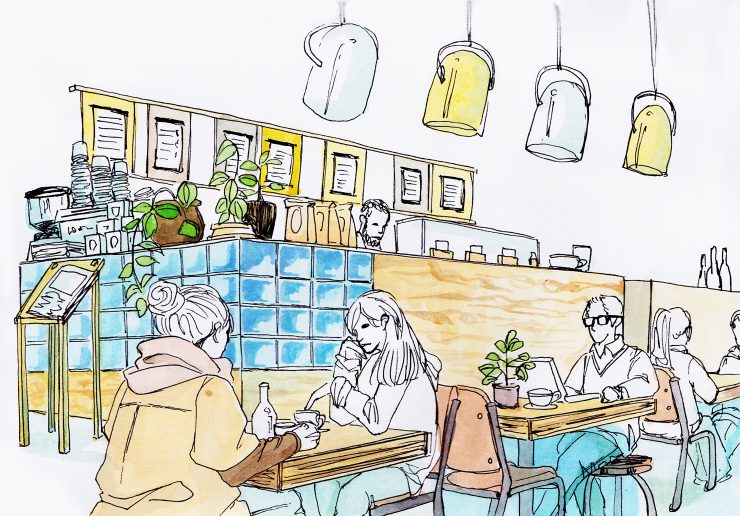
What attracts you to documenting hospitality venues and the people behind them?
Visiting new cafes and discovering delicious coffee has become my way of understanding and appreciating where I live. It’s another way to experience that feeling of wonder and happiness that comes with travelling to different countries. At first, I did “reviews” where I shared drawings of the interior and the food of places I liked but I became conscious of the fact that I was becoming another foodie writing up restaurant reviews… so I sought a different perspective: to get to know the people and understand their business.
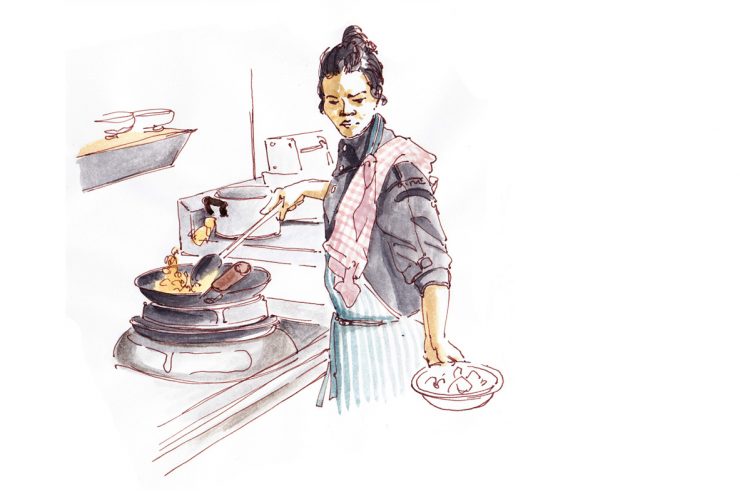
People these days feel that they have every right to post a negative comment or review about a restaurant or cafe based on a single visit. It may be true for some businesses, but they forget that there are families behind that counter, humans who make mistakes, have bad days, or are just starting out and are still trying to learn. We have an incredible tool in this generation and it’s social media. There’s power in this communication that can make your words spread like fire. We need to use it responsibly and understand how our words will affect these families and their livelihood. We should always take our time to understand something or someone before we criticize. It is respect that everyone deserves.
My idea of documenting stories about these businesses is to make a personal connection for my readers so that they will appreciate the food on their plate and the people in the kitchen. I hope that it will also encourage people to continue supporting local businesses.
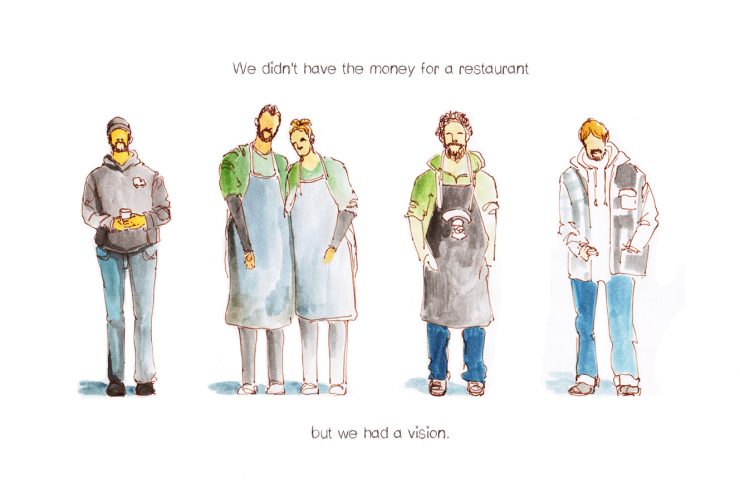
How do you choose the businesses and people that you choose to draw and talk to?
I choose places that I visit frequently, places that can put a smile on my face every time I leave. At first I started with new businesses, but my shift has changed to businesses that have been around for a longer period of time. There’s enough focus in our local media about new restaurants and cafes that have just opened. Adelaide is only so big. When there’s a new place, word goes around, everyone jumps in, and older businesses are forgotten.
I hope my articles and drawings can be a reminder for the diners. Besides, sharing a personal story about that cafe you’ve become attached to for the last three years could reignite a new passion—right?
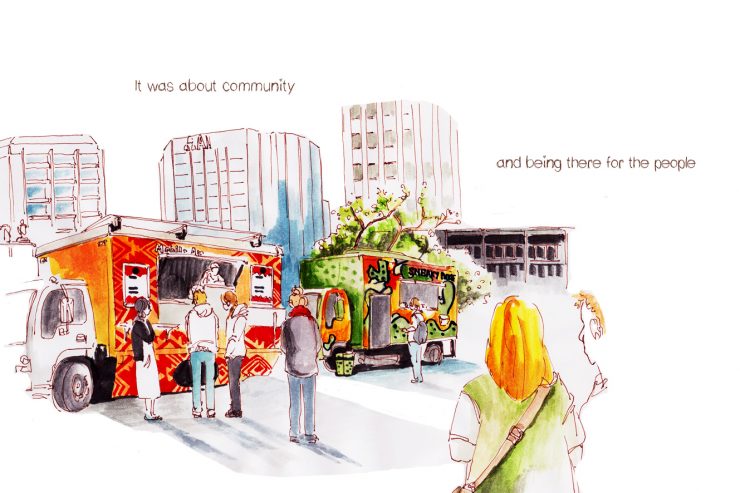
Where do you see Adelaide in the global context?
Adelaide has grown a lot in the past year but we still have a long way to go. I think we need to keep our minds open, and learn and be inspired by things outside of our city. Sometimes we make the mistake of living in a bubble and being satisfied with our work when we can achieve so much more.
I think we’re finally seeing a bit more of the younger population deciding to stay and make a living here instead of moving to Sydney or Melbourne. We need to do everything we can to nurture this and help them with their aspirations.
What projects have you got lined up in the future?
First, I’m looking to expand my interviews to local fashion boutiques and studios. I’m also starting a collection of prints and postcards exclusive to Adelaide, which I want to collaborate on with the local business owners. The other project is a small series of illustrated guides to Adelaide and its surrounding areas, I’ll have more information coming up on my blog soon!
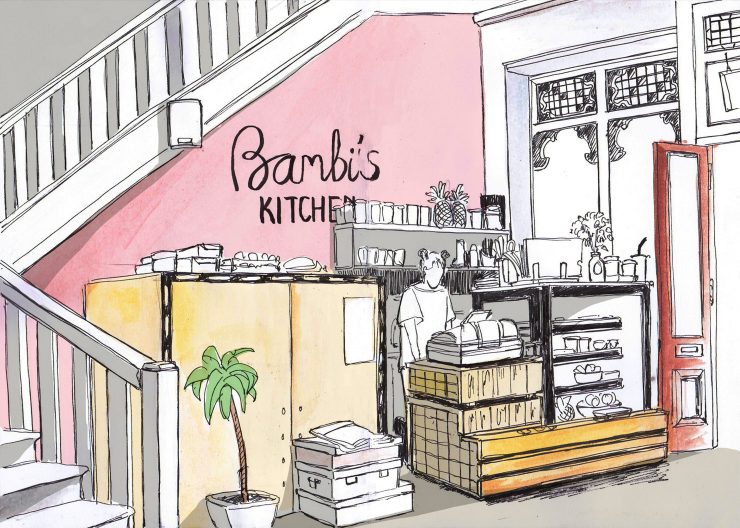

Through Cheng’s work, there’s an opportunity to view the often unseen or unconsidered part of Adelaide—the part that I love about cities like Melbourne and Copenhagen—the complexity and depth of the businesses that make up a city, and the passion and care of the people involved in those businesses, whether they’re owners, customers, or staff. Her artwork also speaks to the importance of connections, with all those experiences and invisible ties making up the framework of a city. Essentially, looking through Cheng’s work, it’s hard not to catch that infectious sense of optimism about all that Adelaide has to offer, and the huge potential it has in its future. It means that maybe, in a couple of years when someone says they’re moving to Adelaide, the response will no longer be “why?” but instead “I’ll have to come visit you!”
Eileen P. Kenny (@eileenpk) is a Sprudge.com staff writer and the publisher of Birds of Unusual Vitality, the coffee interview magazine. Read more Eileen P. Kenny on Sprudge.
The post Elaine Cheng Is Drawing A New Coffee Culture appeared first on Sprudge.

